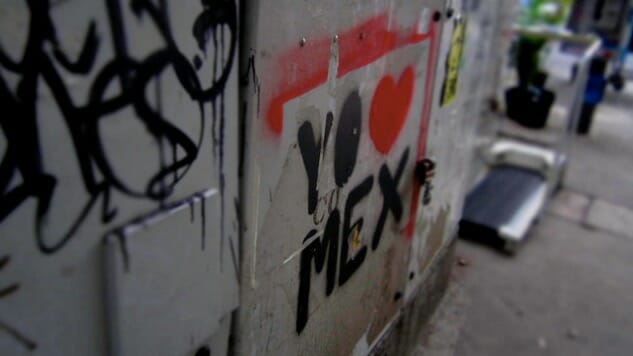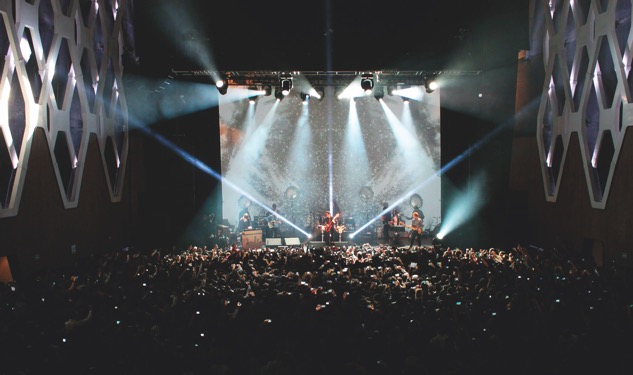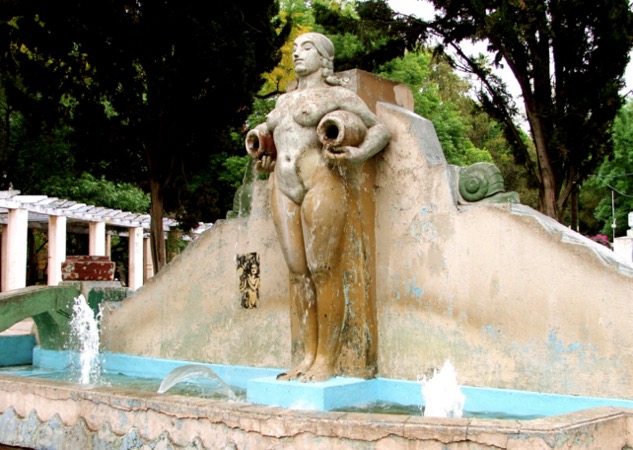
Mexico City, the former Aztec capital toppled by Spain nearly 500 years ago, is a massive metropolis set in a dry lake bed with more than 300 colonias, or neighborhoods. Similar to neighborhood brands like Bushwick, Highland Park and Wicker Park, the hip new spot in CDMX (short for Ciudad de México) is La Condesa. The bohemian art-centric Condesa—along with neighboring Roma—is a leafy residential area southwest of the historic center. During the Golden Age of Mexican Cinema in the 1940s and 1950s, this colonia was home to numerous film stars, but many of its upscale residents moved to Polanco following a major earthquake in 1985. The exodus meant Condesa and Roma suddenly had exquisite yet affordable housing that started attracting artistic types in the 1990s.
Gentrification is happening fast, and the prices now reflect the change, but the local vibe is only getting hotter. The following itinerary covers Condesa and Roma (with a quick side trip into Reforma). As a general frame of reference, Avenida de Los Insurgentes Sur separates the colonias with Condesa to the west and Roma to the east.
Day One
Morning
After an artisanal breakfast at Qué Sería de Mí, bang out Instagram pix at a few main monuments in Reforma (a.k.a. Zona Rosa). Traditional tourism is a nasty business, agreed, but you can quickly knock out the highlights in the morning before the tourist turtles make every shot a time-draining ordeal. From Condesa, head north on Calle Salamanca (note: the street name will change to Sevilla) to the roundabout at Paseo de la Reforma. In the center of this roundabout, the 74-year-old Fuente de la Diana Cazadora (the Huntress Diana Fountain) stands as a monument to the Roman goddess of hunting. Snap a few pix, and then walk east on Paseo de la Reform for five minutes to the famed Angel of Independence, one of the most iconic shots in the city. Built more than a century ago, El Ángel—as it’s commonly called—commemorates the start of Mexico’s War of Independence. Resembling the Berlin Victory Column in Germany, the monument is a common gathering point for both celebration and dissent.
Afternoon
After checking out the landmarks, walk south on Florencia (the name will change to Monterrey) for 20 minutes to the diagonal cross street Avenida Yucatán in Roma Norte. A short half-block down Avenida Yucatán is the famed taco joint El Parnita. Do not skip this place! The daytime-only, two-story restaurant serves world-famous tacos at near-street vendor prices. Specials can include wild boar tacos, but the classic el rellenito taco (chipotles stuffed with panela cheese, beans and avocado) is the local fave. After lunch, visit the gastro-adventurist market Tlapalería Gastronómica next door for exceptional take-home gifts. Want to freak out the buddies at work? Grab a tasty jar of ant-filled lemon jelly! Plenty of Fear Factor foods are in stock, and most of the 100-percent Mexican products are store exclusives that include artisanal honey, various salts, basil butter, exotic fruit marmalades and buckets filled with spices, beans and grains. For additional shopping, visit the nearby Mercado de Medellín (about five blocks south) where hundreds of stalls sell food items from throughout Latin America. Finish the afternoon with a pre-dinner drink at Los Insurgentes (on the avenue of the same name) to indulge in the ancient indigenous cocktail pulque, a milky-colored alcohol made from agave sap. Pulque is uncommon today, but in centuries past, many considered it a sacred drink.

El Plaza Photo courtesy of the Mexico Tourism Bureau and Mexico City Tourism Bureau
Evening
Parque México is the commercial heart of Condesa. You will visit the park on day two, but the surrounding area is home to zona de restaurantes (the restaurant zone), and it is the ideal place for dinner. The options here are many, but MeroToro is a solid choice for Baja-style surf and turf. The team behind the restaurant previously popularized seafood in landlocked CDMX with Contramar, and MeroToro continues the tradition with a stylish look (reclaimed wood, Edison bulbs, a fully open facade) and beachfront-worthy eats. The menu is packed with tempting small plates and its famous pan-fried Iberian ham pork jowl, but go big with the namesake mero (grouper) and one of the many perfectly executed meat dishes. The drink menu includes a wide variety of IPA beers.
After dinner, head a few blocks north of Parque México to the brilliantly moody La Clandestina mezcal bar. The address is Alvaro Obregon 298 near Calle Huichapan, but the bar does not have a sign or an address number, so look for the hole-in-the-wall next to Alvaro Obregon 278. More opium den than mezcal Mecca, La Clandestina serves about two-dozen housemade mezcals held in large plastic containers and dispensed via snake-like tubes. The drinks are numbered, not named, and served with water and paprika-dusted orange slices. Mezcal is made from different types of maguey agave typically from Oaxaca in the south. Espadín is the most common agave—and a genetic relative to blue agave (i.e., tequila)—making it the least expensive, but consider sampling rare types of agave that typically cost north of $100 a bottle in the United States. Start by trying tobalá, often called the king of mezcals, for fruity complexity before checking out tobaziche, tepeztate and/or arroqueño. The bar also features numerous agave blends.

Day Two
Morning
Start the day with breakfast at either El Ocho Café for java junkies or Chaï Bar for tea timers, two equally quaint spots about 40 feet from each other at the south end of Parque México. With a full belly and hearty caffeine fix, spend the morning checking out the park. A few centuries previous, the whole area was the hacienda of the Countess of Miravalle (condesa is the Spanish word for “countess”), and the 1920s-built park was the location of her horse race track. Modeled after the public gardens of Europe, the modern park hosts a duck pond, shaded seating areas, the five-pillar Lindbergh Open Air Theater, lush greenery and native Mediterranean trees. Key iconic sites in the park include the Art Deco clock tower and Fuente de los Cántaros (the Fountain of the Jugs), the latter featuring the image of a woman who also modeled for Mexican painter Diego Rivera.
Afternoon
For lunch, head a few blocks east to Mercado Roma, an impressive culinary marketplace best described as CDMX’s answer to Mario Batali’s Eataly. In addition to traditional gourmet fare, the various stations serve wine, beer, cocktails, gourmet churros and Mexican chocolates. Spend the rest of the afternoon exploring the many streets and shops around Parque México. Circling the park (from inside out) are the racetrack-shaped Avenidas México and Amsterdam, while Avenida Michoacán is the main commercial street that cuts right through Parque México. Focus your shopping efforts on the west side of the park with vintage and indie-designer threads at Viejo Amor, premium mezcal at Sabrá Dios?, modern design and toys at Rojo Bermelo and trendy baby goods at Milktology.

Parque México Photo: conejoazul, CC-BY
In addition to shopping, check out the extensive Art Deco architecture in Condesa with about 300 buildings and structures from the 1920s and 1930s. Examples include Edificios México and Tehuacan on Avenida México, and for Aztec-inspired Art Deco, check out Ernesto Buenrostro’s 1930 Edificio Picadilly on Avenida de Los Insurgentes. The best bet for an Art Deco tour is simply circling Avenidas México and Amsterdam on foot.
Evening
For dinner, you have two excellent options in Roma Norte. In the Condesa-Roma-Reform area, the highest ranked place on Latin America’s 50 Best Restaurants 2015 is Maximo Bistrot at No. 41. Helmed by a husband-wife team, the farm-to-fork bistro serves outstanding Mexican dishes with European twists created by chef Eduardo García, who has Pujol and Le Bernardin on his kitchen resume. Seafood lovers should definitely try the octopus. The daily-changing menu makes this the foodie-traveler choice, but the scene lacks vibrancy. Alternatively, nearby Rosetta (ranked No. 44 on the same list) is an Italian restaurant that uses some Mexican ingredients. The scene is spectacular with tables set up in a grand mansion, and kitchen maestro Elena Reygadas was voted Latin America’s Best Female Chef in 2014. The dishes are arguably better in Maximo Bistrot, and eating Italian in Mexico City seems counter intuitive, but Rosetta is unquestionably the more romantic choice for couples.

Rosetta Photo: Joshua Bousel, CC-BY
After dinner, active travelers might consider salsa dancing, rum drinks and live Cuban music at the Mojito Room in Condesa, while the boutique Hotel Condesa DF offers a more relaxed vibe on its rooftop bar with gorgeous views of Chapultepec Castle and Parque España.
Getting There
Benito Juárez International Airport (MEX) receives flights from around the world with direct connects from Los Angeles, New York City, London, Paris, Toronto and several other major cities. Car service booths compete for your business just past immigration, but the taxi stands outside are generally less expensive. The price is based on location, and expect to pay about 300 pesos (at 18 pesos to the dollar in February 2016) from the airport to La Condesa.
Getting Around
Only take taxis from official stands or have the hotel, restaurant or shop call one for you. Alternatively, the Uber app that is probably on your phone already works in the city. Make sure your phone is on airplane mode to avoid hefty roaming charges and summon cars using the hotel or restaurant wifi. Likewise, look for lime-green Zona WiFi signs throughout CDMX for free wifi service.
To Stay
The aforementioned Hotel Condesa DF is a top choice with a modern refurbished interior housed inside a 1928 French Neoclassical building. In addition to its rooftop bar and central location near Parques España and México, the hotel has all the designer touches one would expect from a trendy boutique hotel. Rooms start at $259 per night.
Hotel Villa Condesa, a more affordable option a block from Condesa DF, is a small bohemian hotel with barely more than a dozen rooms. Set in a historic Art Deco mansion, the hotel is a mashup of modern amenities and classic touches like antique furniture pieces and stone columns. The smoke-free hotel does not accept young children, which makes it an ideal getaway spot for couples. Rooms start at $135.
Top photo: marianna fierro, CC-BY
David Jenison is a Los Angeles native and the Content Editor of PROHBTD. He has covered entertainment, restaurants and travel for more than 20 years.